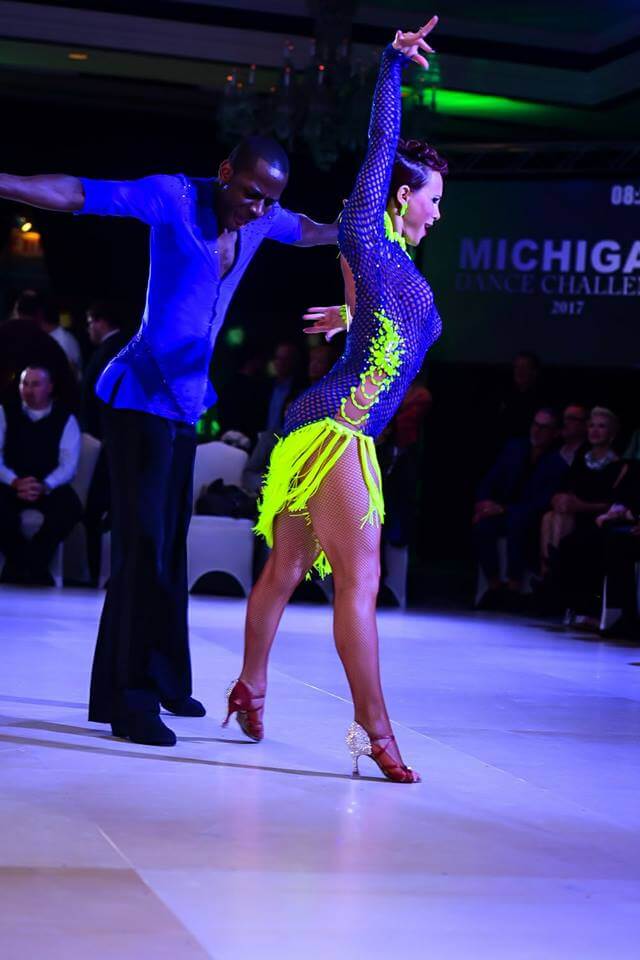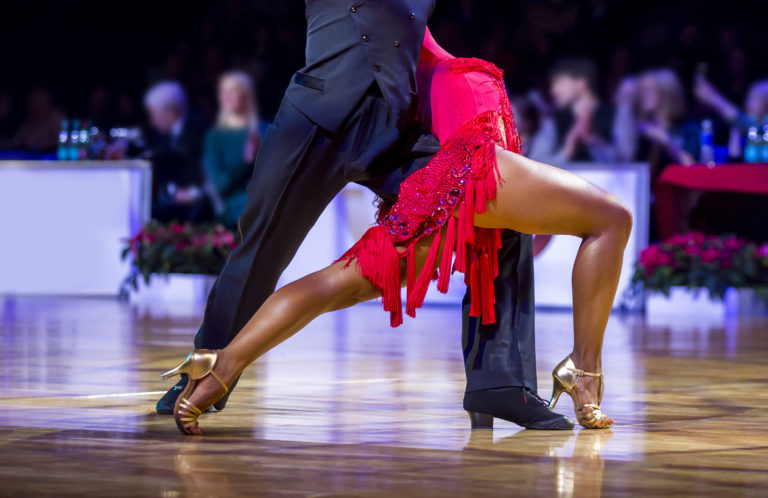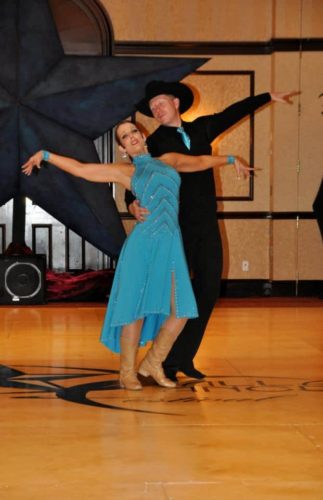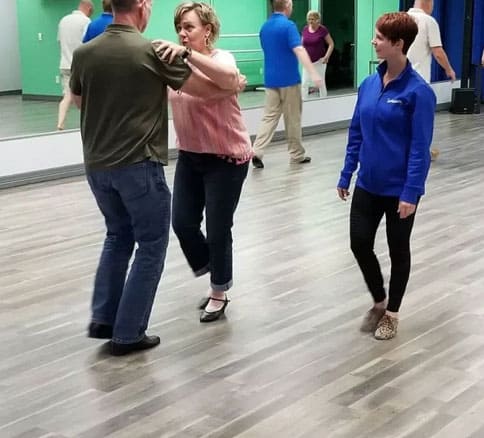Learning Mambo
Mambo is one of my favorite dances – It’s spicy, rhythmical, and full of energy! Because of its high energy and rhythmical movements, it tends to be a fan favorite at dance competitions and dance television shows. Although this dance is tons of fun to do, it can be quite a challenge to get down. It requires a good musical ear, controlled body movements, isolations, and lots of energy. This post will be a great introduction to this fun dance, and I hope it inspires you to learn more!
Below is a look into what I will be covering in this post:
· History and Characteristics
· Musical Information
· Dancing the Basic
· Dancing with a Partner
History and Characteristics
In the early 40’s, Mambo developed from the influence of Cuban Haitians and American Jazz music and was first introduced at a Havana nightclub by Perez Prado. Later in the ’40s, Mambo arrived in New York and quickly gained popularity. It was taught in dance studios, nightclubs, and resorts. Some of Mambo’s greatest influencers were musicians, Tito Puente, Tito Rodriquez, and Xavier Cugat, and dancer/choreographer, Eddie Torres. Mambo is an energetic dance that is characterized by its staccato movements, Cuban Motion, and rhythmical body action throughout!
Musical Information
Mambo music hit the scene in the 1930’s and became popular by the late 40’s with hits like Mambo # 5 by Perez Prado! Check it out here: https://youtu.be/HJlAb4VLs4k
Mambo is the fastest of the American Rhythm dances, ranging from 44-51 measures per minute (MPM). To give you something to compare that to, Cha Cha is 30 MPM! Because of its speed, we generally take three steps in four beats of music and follow a “quick quick slow” rhythm. What’s challenging for most is that we step on beats 2, 3, and 4 and hold on beat 1. Most people want to begin dancing on “1”, so often, people struggle to stay on time when first learning to dance Mambo.
Check out this video to learn a quick tip to improve your timing: https://www.facebook.com/665881863801998/videos/1098519653832904
To learn more about the history of Mambo music, check out this article: https://www.masterclass.com/articles/mambo-music-guide#what-is-the-history-of-mambo-music
Dancing the Basics
When dancing the Mambo, like the other rhythm dances, you will begin with your heels together with a slight turnout of the toes. In dance, we typically maintain contact with the floor – in other words, your feet slide from one step to the next. In Mambo, you will always step with the ball of your foot first while keeping your toes on the floor, then roll through your foot until it’s flat. Of course, when you become more advance, there are always exceptions to this rule, but for now, practice keeping your toes on the ground. Now, let’s get moving, beginning with a break step. A break is when you take a step in any direction and then return to your starting point, which will be in the opposite direction of the first step. This is also known as a rock step in other dance styles. In Mambo, we break forward, backward, and to the side throughout the dance.

Below I will break down the basic step for leaders and followers. Keep in mind that the steps are the exact same in the basic for both roles, but the leader will begin forward on “2” and the follower will begin by stepping back on “2”.
Leaders: Beginning with your left foot, step forward on count 2, replace your weight back to your right foot on count 3, then take a small step back with your left foot on count 4. Now, repeat to the back with your other foot – step back with the right foot on count 2, replace your weight to the left foot on count 3 and take a small step forward with your right foot on count 4. Don’t forget to hold on count 1. To simplify, you will dance a forward break on the first measure and dance a back break on the second measure.
Followers: Beginning with your right foot, step back on count 2, replace your weight forward to your left foot on count 3, then take a small forward step with your right foot on count 4. Now, repeat to the front with your other foot – step forward with the left foot on count 2, replace your weight back to the right foot on count 3 and take a small step back with your left foot on count 4. Remember to hold on count 1. To simplify, you will dance a back break on the first measure, and a forward break on the second measure.
Check out this quick tip video on Footwork in the Basic Step for a helpful visual: https://www.facebook.com/665881863801998/videos/2909616159259719
As mentioned earlier, Mambo is characterized by its strong Cuban Motion. Cuban Motion is a body action that is created by bending then straightening one knee at a time each time you take a step along with dancing your upper body in opposition to your hips. To make your Mambo look like a dance rather than just steps, you will want to apply this technique to your basic. This technique does not come over night and will require lots and lots of practice. Here are a couple quick tip videos on this body action, but I do recommend going to your local studio and taking lessons to learn more!
This first video simply talks about the bending and straightening of the knees in Merengue: https://www.facebook.com/665881863801998/videos/541008169877878
This next video goes more into detail about how the rib cage works in Mambo:
https://www.facebook.com/665881863801998/videos/272608694169596
Dancing with a Partner
Now that you have practiced the Basic step, let’s learn to dance with a partner! Below, I will break down how to get into a closed hold with your partner.
With your weight poised forward over the balls of your feet, begin by facing your partner about a foot apart and with the follower slightly offset to the right of the leader. If you are leading, place your right hand on your partner’s right shoulder blade, then lift your left arm until your elbows are even with your arm bent at a 90 degree angle and your hand curved towards your partner at about her eye level. If you are following, you will rest your left arm gently on top of your partner’s right arm and follow the curve of his arm to his shoulder. Place your right hand in your partner’s and lightly clasp. Make sure to keep your arms and elbows in front of your body with a slight forward poise to create a positive connection which will make it easier to lead and follow.
In this position, practice dancing the Basic Step, and when you feel comfortable, add music 😊 Here are some good Mambo songs to practice as well:
https://youtu.be/WncdzyQNQtM
https://youtu.be/4JVv43JS_TY
I hope you have enjoyed this post and are ready to learn more! If you have any questions, please don’t hesitate to ask.
Thank you for reading!






4 thoughts on “Mambo Tutorial – For Beginners”
Engaging in ballroom dance can help you develop a deeper understanding and appreciation for different cultures and their artistic expressions.
Absolutely! Thank you for your comment.
Whether you are a beginner or an experienced dancer, there is always something new to discover, refine, and improve.
Absolutely! Thank you for your comment : )